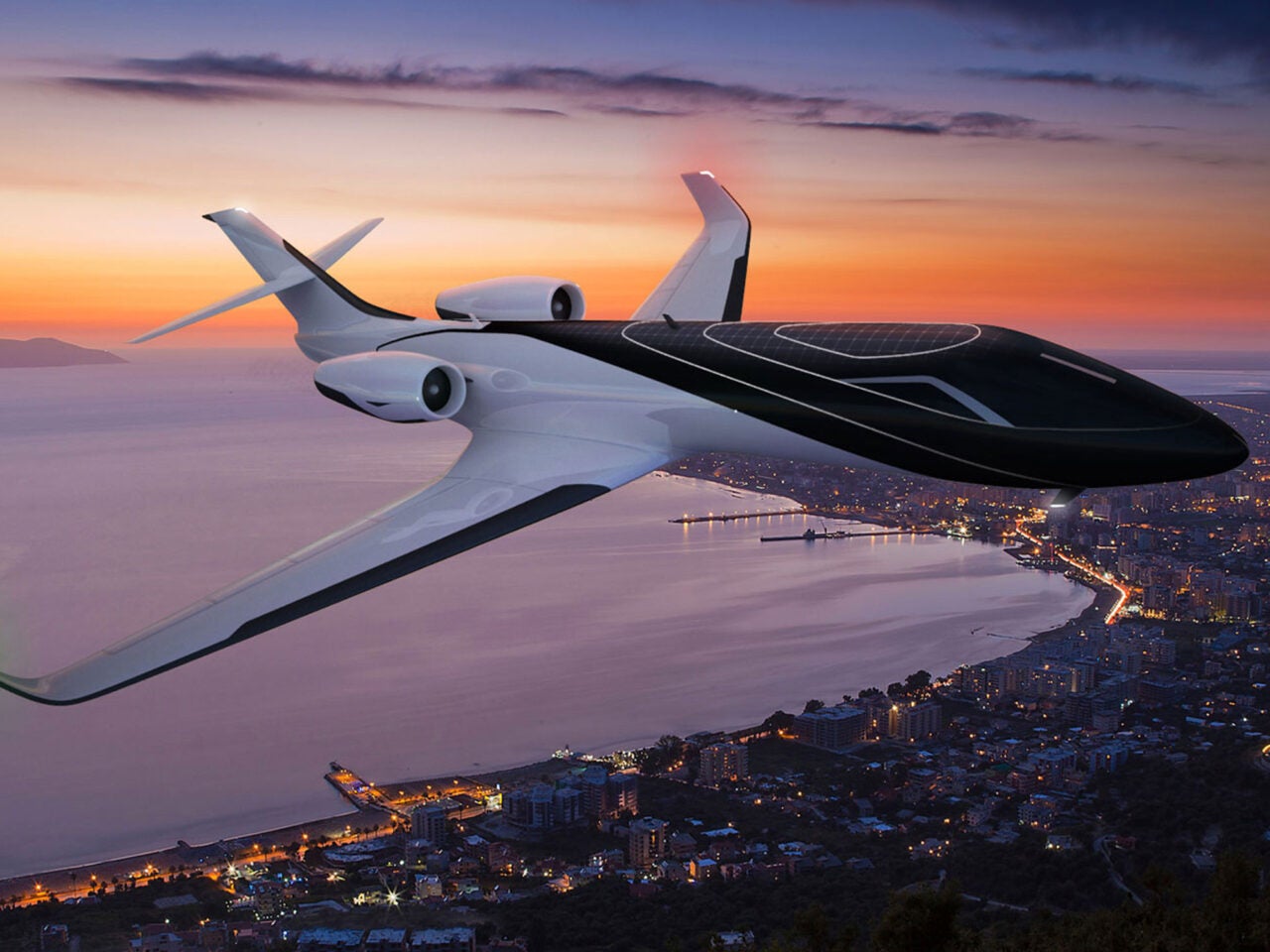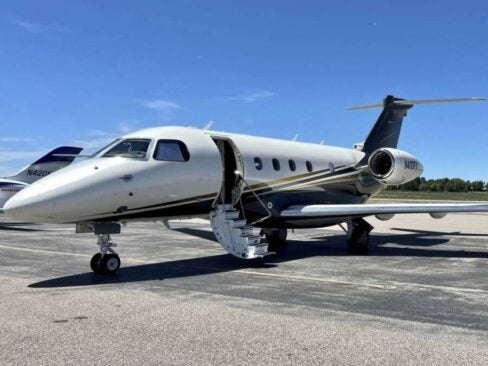One of the biggest fascinations for airline passengers is often an aircraft’s porthole-style windows, and the ability to stare out; the land rolls like a patchwork quilt below, and you fly high above it, touching the clouds. With so many people enjoying the unique perspective offered by an airplane window, it might surprise you to learn that for decades, tech companies, designers, and aircraft engineers have been experimenting with the idea of a windowless plane.
International transport design agency Technicon Design, for example, has created a concept for a windowless plane called IXION. Instead of windows, the jet’s interior cabin walls are lined with flexible-high definition screens that project a 360-degree, real-time view of what is outside the aircraft. The video footage is captured on a live feed by a pair of cameras, which are mounted on the jet’s wings.
Designed to be powered by solar panels in the aircraft’s roof, the low voltage screens also have the ability to be split using parallax barrier technology, allowing passengers to see different views at the same time. Air conditioning and cabin lighting would be provided by two strips along the jet’s body, which would section the screens into three.
Interior of IXION Project / ©Technicon Design
The UK-based Centre for Process Innovation also unveiled a similar design concept for a windowless plane — but this one focuses on the screens being able to provide cabin lighting, and a range of entertainment options. The ‘multi-screen’ option also means that if any of the displays are faulty, these can be fixed without shutting down an entire section of the aircraft.
The CPI’s design discusses the commercial prospect for a windowless plane, rather than for a private aircraft. For instance, passengers sitting on the aisle would be able to use the seat in front of them as another large display unit; this is less likely to be an issue on a private jet, where additional space and alternative seating arrangements are a part of the experience.
On the other hand, one element of CPI’s design could easily be adapted to a smaller, private aircraft. The company’s concept considers using high-tech screens as lighting displays that can change color. This ability would be particularly useful if the screens were programmed to the sun’s position or recreated sunrise and sunset in the cabin, helping long-haul passengers adjust to different time zones.
Even the Dubai-based, commercial airline Emirates has created a new proposition that uses the windowless plane concept; in 2018, it debuted Being 777s with fully enclosed First Class Private Suites. These super-luxe private suites feature ‘virtual’ windows instead of the real thing, using real-time fiber-optic camera technology to create the views out of the suites’ windows.
[See also: The Longest Range Private Jets]

Interior of Spike S-512 / ©Spike Aerospace
There is one aircraft manufacturer that is focusing on private jets, however. Privately owned, Boston-based company Spike Aerospace is working towards its own version of a windowless private jet named the Spike S-512. The 18-passenger supersonic business jet has been in development for several years, and Spike Aerospace plans for it to cut flight times by 50%, without creating a loud sonic boom.
Each side of the windowless jet will feature expansive, high definition screens that can be programmed by the passenger, using their mobile phone. Panoramic views of the jet’s surroundings are provided by cameras on the plane’s exterior; these 4K videos are stitched together using a specially designed software, and create a seamless view ‘outside’. The Spike S-512 also benefits from high-speed Wi-Fi and has the option to be crafted and customized depending on how its owner plans to use the jet.
As well as being an innovative and interactive experience for passengers, there are several benefits to creating a windowless plane. By removing the windows, the weight of the aircraft is reduced: this simplifies construction and allows for greater flexibility when it comes to the jet’s interior design. Engine noises can be reduced by insulating the fuselage, and the structure of the aircraft is safer and more secure without the holes in it required to install windows. Pilots, of course, will still have a conventional window in the cockpit.
Despite the idea of a windowless plane seeming more like something from a science-fiction film than a modern-day reality, the fact that several different airlines and design companies are investing in the technology suggests that windowless planes could be the future of flying. Plus, with windowless private jet concepts like the Spike S-512 receiving investment, and individuals like Bill Boisture joining Spike Aerospace’s executive team, we might find that the first windowless planes are flying as soon as 2025.










